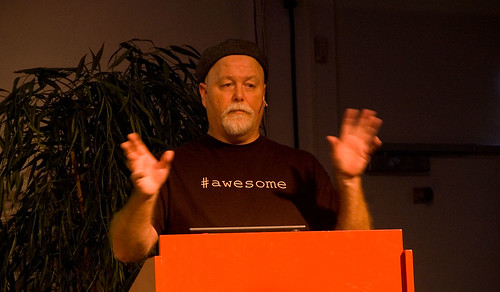Stowe Boyd, really realtime disruptive media, and challenges for future journalists
I am at the Really Realtime Disruptive Media conference, which is also streamed live at http://livestream.com/disruptivemedia. I’ve just listened to Stowe Boyd and would like to share some of it, though liveblogging is becoming more and more tricky when everyone’s got access to the event in real time. I think this development is good, since you have to contribute your own thoughts and ideas and not just echo back what is being said.
Anyway, Stowe did a good job summing up the shift from the web of pages to the web of flow. I’d like to focus on the journalistic aspects of what he said.
The basis is that we rely more on our network of peers than on traditional media, traditional search, traditional anything.
– It’s the hollowing out of established mass media as people move away from mass belonging, says Stowe Boyd. They start to reject the editorial voice of newspapers.
He brought up the live twittering of the plane crash in the Hudson river and the tweets from the Iranian demonstrations while CNN was broadcasting re-runs as two examples.
So how can media companies matter in this time/space? They need to take the step out there, to be where their (former) readers are. Stowe Boyd talks about web pages and even blogs as the “dusty library shelves” of today. You go there but it’s not where you have your conversations. So journalists need to go to the streams where their writing is in fact discussed, they need to participate, to analyze what’s being said, and do what they’re good at – summarize, bring up the interesting stuff, and make it easier for people to find it themselves by linking to relevant hash tags etc.
By building credibility and making connections on Twitter and the better tools that will replace it you have direct access to people who can make your reporting better. The main thing is as always to listen.



Recent Comments